Biomedical Engineering Reference
In-Depth Information
ORIGINAL
MEAN + 1st & 2nd
80
80
60
60
40
40
20
20
0
0
−
20
0
0.1
0.2
0.3
0.4
0
0.1
0.2
0.3
0.4
TIME
TIME
5 HARMONIC
10 HARMONIC
80
80
60
60
40
40
20
20
0
0
0
0.1
0.2
0.3
0.4
0
0.1
0.2
0.3
0.4
TIME
FIGURE 11.11
Harmonic reconstruction of the aortic pressure waveform shown in Figure 11.2.
TIME
much as the Fourier series decomposes a periodic signal into its corresponding trigonomet-
ric components.
(o) is a complex valued function of the continuous frequency, o, and is
analogous to the coefficients of the complex Fourier series,
X
c
m
. A rigorous proof for this rela-
tionship is beyond the scope of this text, but it is useful to note that the Fourier integral is
derived directly from the exponential Fourier series by allowing the period,
, to approach
T
infinity. The coefficients
. Concep-
tually, a function that repeats at infinity can be considered as aperiodic, since you will never
observe it repeating. Tables of Fourier transforms for many common signals can be found in
most signals and systems or signal processing textbooks.
As for the Fourier series, a procedure for converting the frequency-domain version of the
signal,
c
m
of the trigonometric series approach
(o)as
T
!1
X
), can be
completely recovered from the Fourier transform with the inverse Fourier transform (IFT)
X
(o), to its time-domain expression is desired. The time-domain signal,
x
(
t
1
1
2p
Þ
e
j
o
t
d
x
ð
t
Þ¼
X
ð
o
o
:
ð
11
:
7
Þ
1
These two representations of a signal are interchangeable, meaning that we can always go
back and forth between the time-domain version of the signal,
x
(
t
), and the frequency-domain





























































































